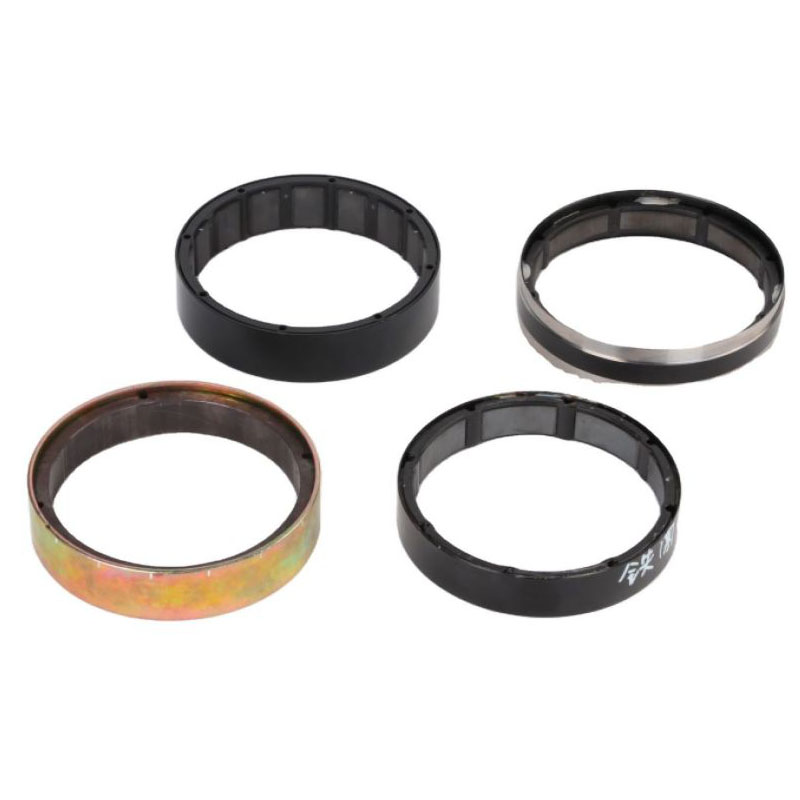In the current era of widespread electronic devices, electromagnetic interference (EMI) has become an "invisible killer" affecting device performance, easily causing signal distortion and frequent malfunctions. As a low-cost and high-efficiency anti-interference component, magnetic rings suppress the propagation of high-frequency interference signals and have been deeply applied in electronics, automotive, communications, industrial and other fields. Their core function is to build an "electromagnetic protection barrier" for devices, ensuring stable operation.

Civil electronic devices such as mobile phones, computers and home appliances are prone to interference from their own circuits or the external environment, and magnetic rings can resolve this precisely:
Used at both ends of mobile phone charging cables and computer data cables, nickel-zinc ferrite magnetic rings can attenuate high-frequency interference in the range of 300MHz-1GHz, reducing the data transmission error rate from 5% to 0.1% and avoiding issues like screen flickering during charging and file transfer interruptions.
After installing magnetic rings on the power cords of home appliances, the electromagnetic radiation generated by the devices during operation can be reduced. Tests on a certain brand of microwave ovens show that the radiation value decreased from 0.8μT to below 0.2μT, complying with the national GB 4706.1 safety standard.
Automobiles have dense internal electronic systems, and interference from engines and motors can easily affect devices such as navigation systems and sensors—magnetic rings play a crucial role here:
Adapted for vehicle-mounted navigation signal lines and sensor connection lines, manganese-zinc ferrite magnetic rings can resist pulse interference when the engine starts, reducing the navigation positioning error from 10 meters to within 1 meter.
After installing magnetic rings on the high-voltage wiring harnesses of new energy vehicles, the impact of high-frequency interference generated by motor operation on vehicle-mounted radar is reduced by 80%, preventing failures of the advanced driver assistance system (ADAS) caused by radar false alarms.
Communication equipment such as base stations and routers have extremely high requirements for signal transmission quality, and magnetic rings can reduce signal loss caused by interference:
Magnetic rings used in the RF cables of 5G base stations can attenuate external interference signals by more than 20dB, increasing the base station coverage area by 15% and reducing signal dead zones.
After installing magnetic rings at the network cable interfaces of home routers, the network stuttering rate caused by adjacent WiFi signal interference decreased from 20% to 3%, making video calls and online games smoother.
Equipment such as motors and frequency converters in industrial workshops generate strong interference, which can easily cause misoperations of control devices like PLCs (Programmable Logic Controllers) and sensors—magnetic rings can build a solid protection:
After installing magnetic rings on PLC control cables, high-frequency interference generated by frequency converters can be suppressed, reducing the equipment misoperation rate from 8% to 0.5%. A machinery processing factory thus reduced production rework by 30%.
When magnetic rings are used in the signal lines of industrial sensors, the interference attenuation rate can still be maintained at ≥90% in dusty and high-temperature environments, reducing the sensor measurement error to ±0.2%.
| Application Field | Typical Equipment | Core Function | Key Performance Data |
|---|---|---|---|
| Electronic Equipment | Mobile phone charging cables, computer data cables | Attenuate high-frequency interference, improve transmission quality | Error rate: 5%→0.1%; Radiation value ≤0.2μT |
| Automotive Electronics | Vehicle-mounted navigation systems, sensors | Resist pulse interference, ensure accurate positioning | Positioning error: 10m→1m; Interference impact reduced by 80% |
| Communications | 5G base stations, routers | Reduce signal attenuation, expand coverage area | Interference attenuation ≥20dB; Coverage area increased by 15% |
| Industrial Control | PLCs, industrial sensors | Suppress strong interference, reduce misoperation rate | Misoperation rate: 8%→0.5%; Measurement error ±0.2% |
Currently, magnetic rings are evolving toward "customization and miniaturization": Specialized magnetic rings are launched for interference of different frequency bands (e.g., nickel-zinc magnetic rings dedicated to high frequencies above 1GHz); miniaturized designs are suitable for small electronics such as wearable devices, with weights reduced to below 0.5g. As a "basic anti-interference component", the wide application of magnetic rings will continue to safeguard the stable operation of equipment in various fields, making them an indispensable "protective guardian" of the electronics industry.